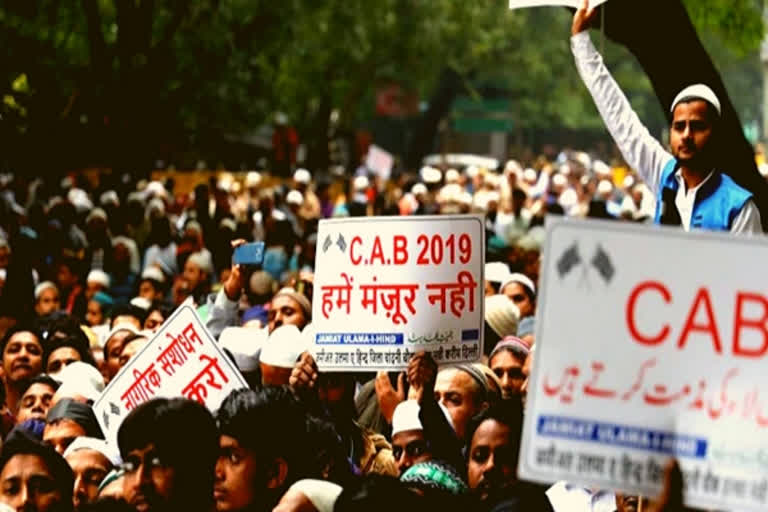Hyderabad:Citizenship Amendment Act (CAA) is causing unrest afresh in Eastern India. Northeastern states like Assam, Tripura and Meghalaya are particularly witnessing widespread protests.
While supporters say that the CAA will correct the injustice done to members of certain communities during India-Pakistan partition, critics say that it is against the spirit of the Constitution and a conspiracy to divide people on the basis of religion.
Citizenship Act, 1955 states that those who enter India without any documents are illegal migrants and bans citizenship to them.
However, the new CAA offers to treat minorities - Hindu, Sikh, Jain, Christian, Buddhist and Parsi - who came from undivided India like Pakistan, Bangladesh and neighbouring Afghanistan due to religious persecution, as refugees.
The fresh Act seeks not to treat them as illegal migrants besides giving eligibility to apply for citizenship as well.
Interestingly, the Muslims of the same three nations are not eligible to apply for Indian citizenship.
Decades-long problem
In 1947, after the division of the nation into India and Pakistan, about 1.5 cr people crossed borders on both sides, some given shelter as refugees and some acquired citizenship.
An estimate suggests that about 80,000 people migrated to India during the 1959 Tibetan uprising.
Interestingly, Tibetan spiritual leader, 14th Dalai Lama himself is a refugee in India.
In 1972, several Indian-origin citizens in Uganda who faced harassment migrated back home as refugees.
More than one lakh Tamils from Sri Lanka migrated to India as refugees owing to a proxy war.
Though there is no issue with these refugees, the problem is being posed from "illegal migrants" in India.
During the division of India, people in Western frontiers faced many problems as most of the migrations occurred on religious background.
While Hindus and Sikhs switched over to India, a lot of Muslims from India shifted over to that nation.
However, the situation in the Eastern frontier is different.
Later on, due to the changed political scenario in East Pakistan and Bangladesh, lakhs of people migrated to India from Bangladesh. That flow of migration is continuing till date.
Union Minister of State for Home Affairs, Kiran Rijiju has informed in Parliament that about 2.40 cr "illegal migrants" came from Bangladesh.
Most of them are in West Bengal and not in Assam as being conceived.
More than 75 lakh "illegal migrants" are in West Bengal, followed by Assam and Tripura, which occupy second and third positions respectively, so far as immigration from Bangladesh is concerned.
